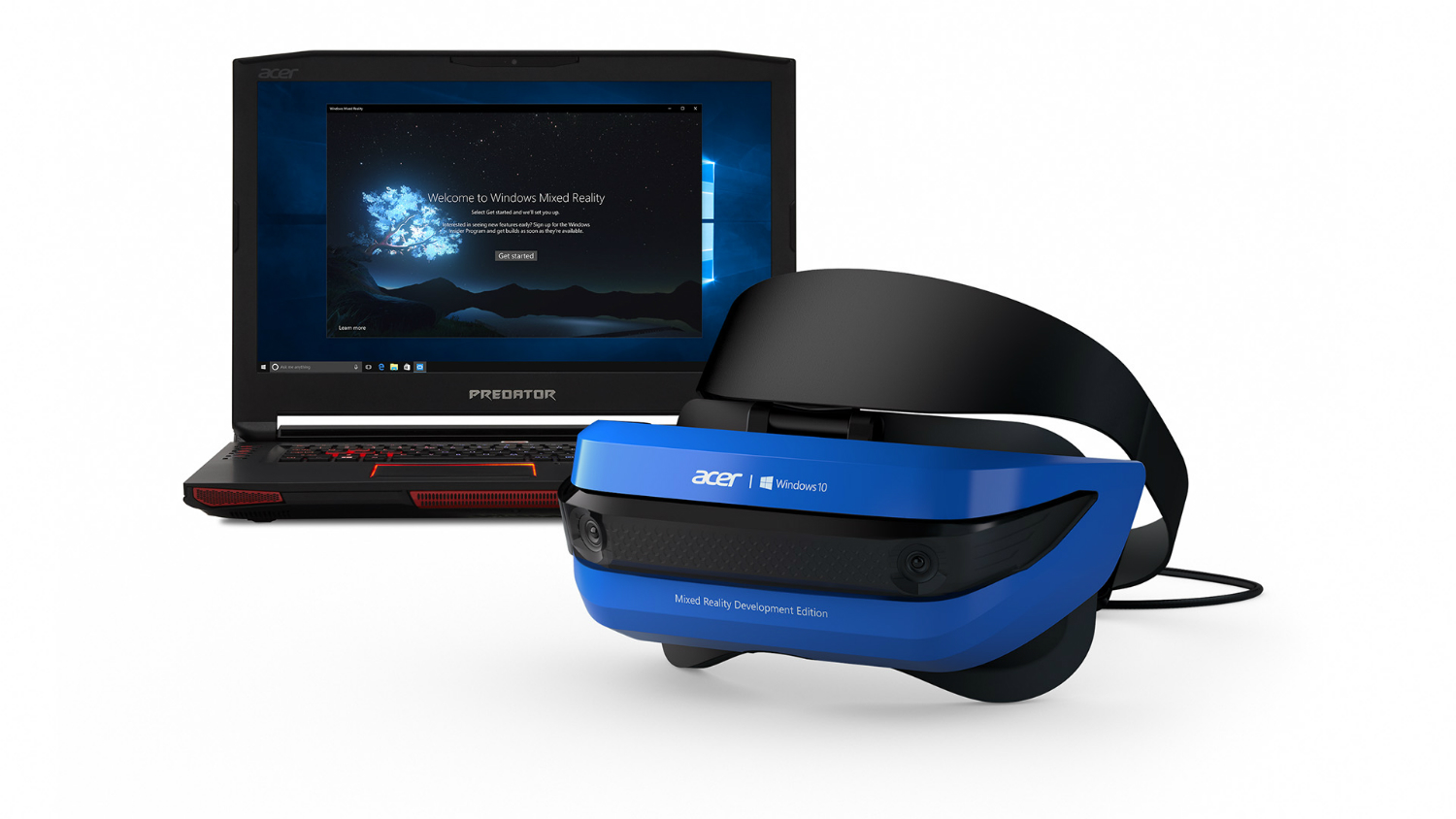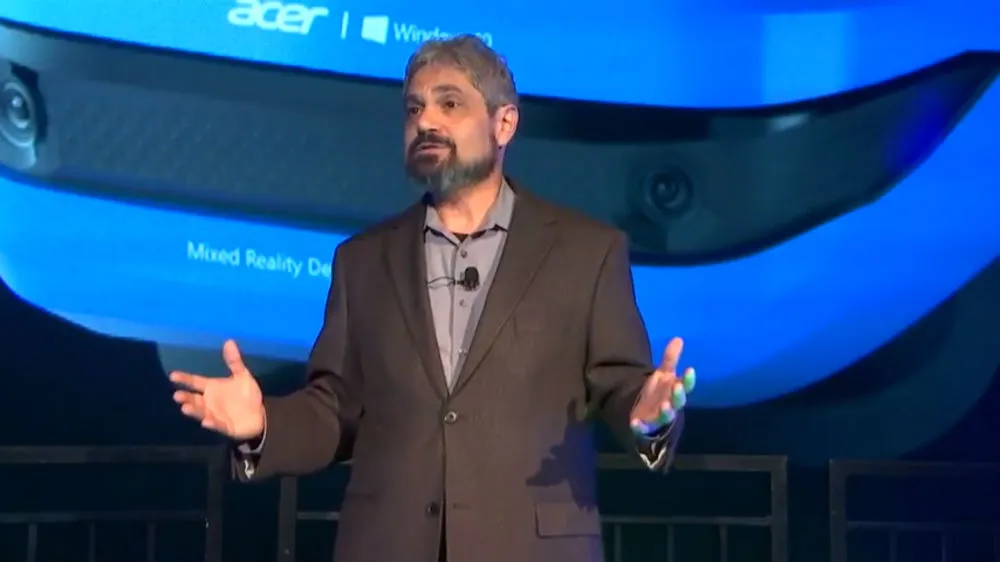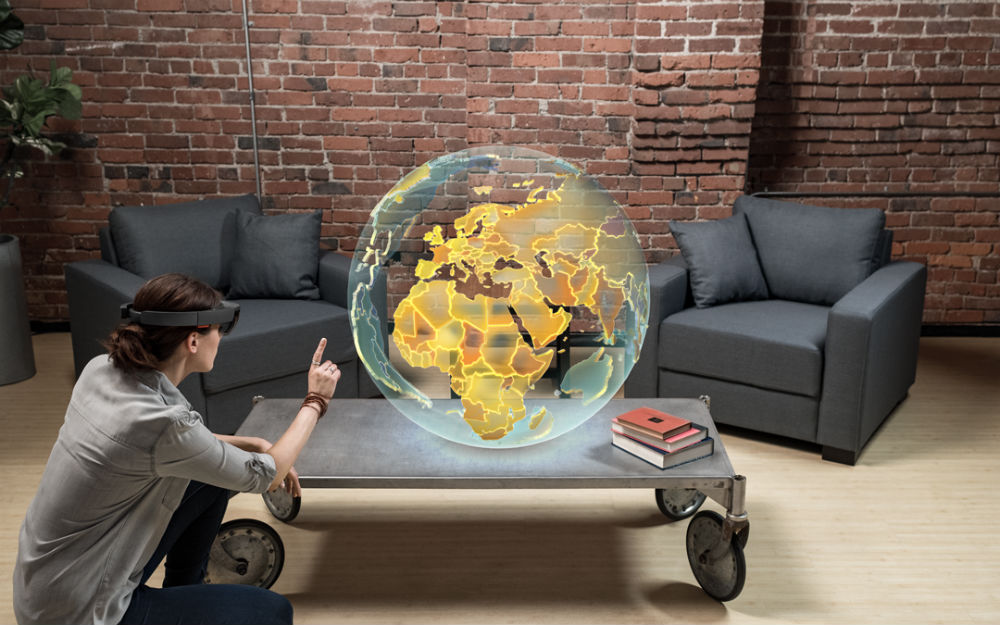One of Microsoft’s newest leaders in mixed reality, Mark Bolas, took the stage for a few minutes at Acer’s press conference this week and put into human terms the company’s goals with the technology.
Bolas is one of the people who helped jumpstart VR’s renaissance, helping move it from researcher’s tool to mass market product with his mixed reality lab at USC. About a year ago he decided to go to Microsoft to lead a team there, becoming their Director of Program Management, Mixed Reality. Now he is helping define the company’s strategy and vision moving forward into the new medium.
Microsoft already re-branded its efforts with this technology once, doing away with the Windows Holographic terminology it used initially and replacing it with Windows Mixed Reality. As someone who watches this technology closely it has also been tough to see events where the company shows off its $3,000 HoloLens headset immersing someone in a world surrounded by virtual objects.
The problem is HoloLens is an augmented reality device with a limited field of view, so the objects only appear in a small window directly in front of your eyes. It could be useful for business applications or training, but games suffer because of the limited field of view, and you’re not likely to use it to put a virtual television on the wall. That’s because HoloLens is quite a bit different from immersive VR that truly makes you feel present in a virtual world. In wide field of view VR, headsets like the slate of devices coming from Microsoft’s partners (including Acer’s we tried this week) could make hanging virtual screens all over your walls and playing VR games a very tempting thing to do with a headset that only costs $300 or $400.
So when Bolas took the stage for a few minutes this week in his first public appearance since taking the job, it looked a bit like a fresh start for the company. Even though Microsoft has been working on mixed reality technology for years at this point, Bolas and his decades of experience helped put the company’s ambitions into crystal clear terms for the first time.
“My ID card at Microsoft has the mission statement on it — and its mission statement is to ‘help people achieve more’. It’s not just about having new technologies, it’s about what we’re gonna do with these technologies to really allow people to do and achieve,” Bolas said. “To really merge our superhuman computing powers that we’ve got these days with the agency we know with our bodies with what we just naturally want to do, in a way that’s fun and productive.”

Microsoft still has a lot to prove in this emerging industry, with input and controls being the biggest blind spot for the company. The HTC Vive and Oculus Rift both offer controllers that bring your natural finger, hand and arm movements into a virtual world for a range of intuitive games and experiences. There’s no word yet on what Microsoft or its partners will be able to do in the near future beyond using an Xbox controller, keyboard or mouse to interact with a virtual world.
Read More: Hands-On With Acer’s Mixed Reality Development Edition
Nevertheless, VR headsets produced by Microsoft’s partners are poised to be more convenient and less expensive than Vive and Rift because they use cameras and sensors on the device itself to find its position rather than external camera accessories or laser boxes. You can easily move the new Windows headsets from one room to another when that is bit of a pain with Rift or Vive. Bolas sees the affordability and convenience of these upcoming headsets from Microsoft’s partners as bringing a much larger segment of PC users into VR for uses that include both productivity and entertainment.
“We’re gonna have everybody helping us define what mixed reality means and what they’re going to use it for. When I say productivity, it means you can surround yourself with screens and you can all of a sudden just have things where you want it to be,” Bolas said. “When it comes to gaming and entertainment, as I’m sure those of you who have put on head-mounted displays know, you just get an experience of immersion unlike anything else before…people can interact with digital information in an instinctual way.”



























